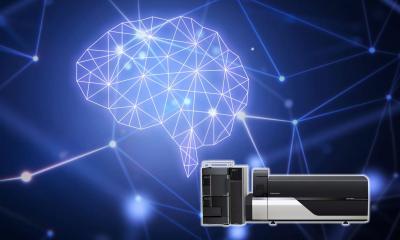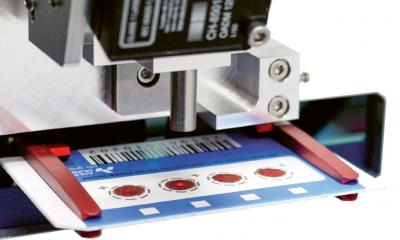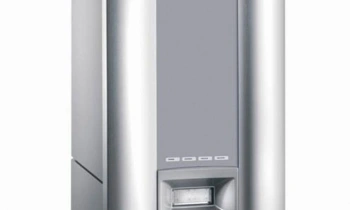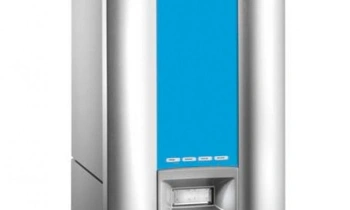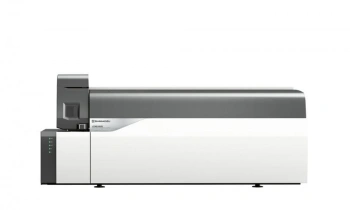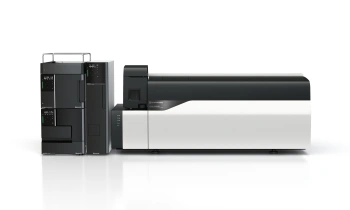Mass Spectrometry
Shimadzu LCMS-8060: The new family member
With its previous LCMS-8030, LCMS-8040 and LCMS-8050 triple-quadrupole systems, Shimadzu has set leading standards in terms of speed, sensitivity and functional design. With the introduction of the new LCMS-8060 (Figure 1), the success story of the LCMS-triple-quadrupole family reaches another milestone.

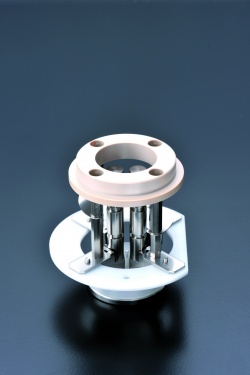
In addition to its heated ESI source, the youngest member of the UFMS (ultra fast mass spectrometry) family combines all UF technologies. These include the UFsweeper III, a collision cell filled with argon gas that, due to its high-speed technology, enables dwell times of 0.8 ms per MRM. Furthermore, the UF scan rate of 30000 Da/s and the UF polarity switching time of 5 ms is maintained. These properties were already outstanding in the LCMS-8050. Sensitivity was also increased through the new UF Qarray (Figure 2). With the powerful vacuum system of the LCMS-8060 and the optimized ion inlet consisting of a desolvation line (DL) and orifice, it has been possible to introduce an increased number of ions into the mass spectrometer.
World's best sensitivity meets highest speed
Using electrical fields, the new UF Qarray, based on quadrupole technology, minimizes ion scattering that occurs during transfer from the DL into the first vacuum chamber. The design of the advanced UF Qarray is similar to that of its predecessor and also retains the low susceptibility to contamination. Due to the novel design of the UF Qarray, ion focusing and entry of ions into the next ion chamber is optimized, ensuring an efficient ion beam. This effective ion focusing, together with an improved background noise reduction, leads to a significantly improved signal-to-noise ratio and thus to higher sensitivity (Figure 3).
With the new UF Qarray, Shimadzu has achieved a technological breakthrough that combines high, apparently contradictory, demands such as increased sensitivity and robustness of LCMS systems. New applications become conceivable and feasible when the world's best sensitivity is combined with high-speed parameters in the LCMS-8060. The smallest sample amounts in complex matrices ± or any low sample concentrations that need to be further diluted to decrease matrix effects ± are now detectable. As an example, (d6-)-norepinephrine is discussed here, of which just 5 ppt can be extracted from plasma and still be detected (Figure 4).
Uniform software for all triple-quadrupole models
The increasing demands for quantification at trace levels in clinical research, food analysis and in other market segments, place high demands on instrument technology as well as on users. The LCMS-8060 offers not only technological advancements at the highest level, but also continuous adaption of the instrument software to changing user needs. The LCMS-8060, as well as all other triple-quadrupole models and Shimadzu's HPLC/UHPLC systems, is controlled using the LabSolutions LCMS-software. A uniform user interface enables overview and control of the hardware as well as simultaneous processing of initial analysis results.
Additional functions
The excellent speed parameters of the LCMS systems and the advanced software enable the implementation of helpful additional functions such as the so-called Synchronized Survey Scan (SSS). This additional MS/MS experiment is triggered when a predefined intensity in the associated experiment is exceeded. As an example, it is possible with this function to carry out an MRM and the corresponding qualitative production scan almost simultaneously within one analysis run, without compromising the accuracy of the quantitative analysis.
For example, extracted whole blood samples spiked with flunitrazepam (Figure 5) demonstrate impressively that, despite the simultaneously measured SSS, the peak reproducibility attained is very good. This is only possible with the help of high UF scan speeds that assure generation of a sufficient number of data points, necessary to describe the peak accurately. In addition to the quantitative results, high-quality mass spectra are obtained that correlate well with library spectra, even at low concentration. This enables unequivocal peak characterization.
Workload reduction due to fully automated MRM optimization
The improved, fully automated MRM optimization enables a real reduction in workload. While it was still necessary with earlier versions to determine and enter the parent ion manually, it is now sufficient to indicate the molecular weight. The software then calculates the protonated or deprotonated ions as well as all possible adducts and takes these into consideration during optimization. With the LCMS-8060, Shimadzu has further advanced the MS technologies of its predecessor models. Particular attention has been paid to robustness and straightforward operation. Outstanding performance of the instrument is thus guaranteed over a long period of time.
21.07.2015



